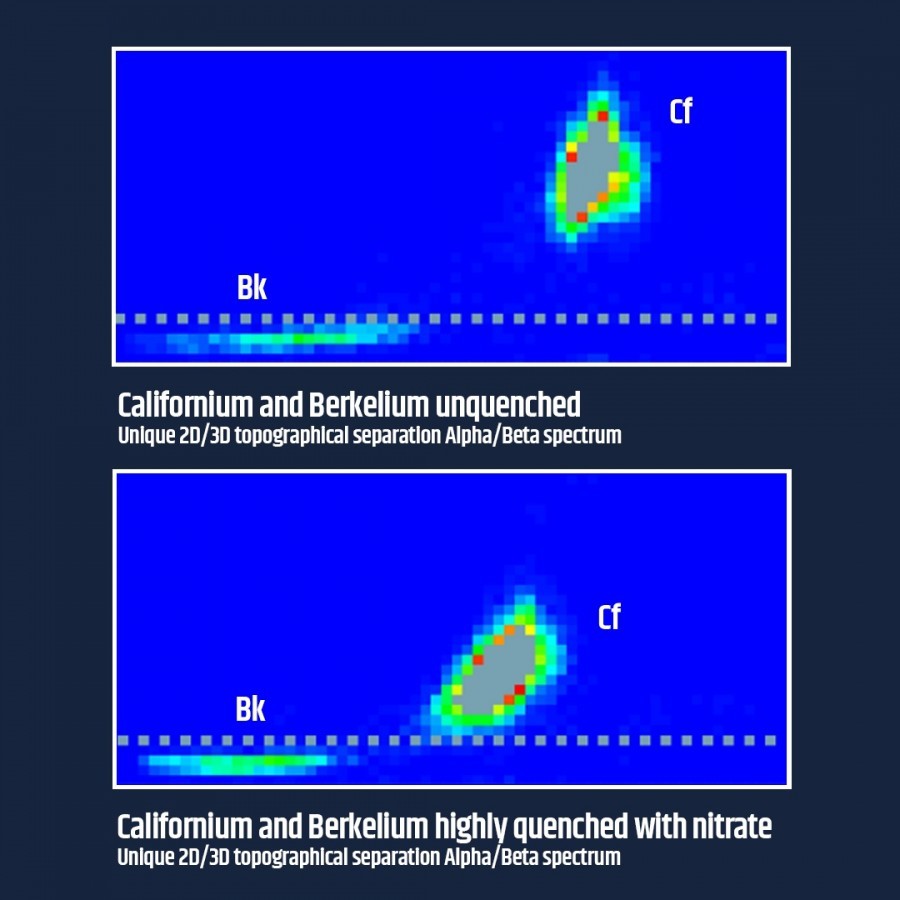Radiometric analysis of heavier actinides with the Hidex 300 SL
05/12/2023

The Colorado School of Mines has been using the liquid scintillation counter to count the decays of novel isotopes such as Berkelium and Californium
The Colorado School of Mines is a public R1 research university focused on applied science and engineering. The Mines Radiochemistry Lab uses radioactive elements to solve complex problems in nuclear energy, the separation and purification of metals, the disposal of nuclear waste, and the environment.
The school’s lab is also one of only two university labs in the world that experiments with rare and highly radioactive heavy actinide elements such as Berkelium, Einsteinium, and Fermium. Research Assistant Professor Jessica Jackson has been using the Hidex 300 SL for a range of radiometric analysis experiments using alpha-beta discrimination. The LSC’s unique topographical 3D separation was a key reason why the school procured the Hidex over another model.
“…the Hidex is integral to our ability to separate isotopes…”
Jessica said, “One of our projects is studying the fundamental chemistry of the heavier actinides. We design experiments using Berkelium and Californium. Berkelium-249 decays by beta emission to Californium-249, which decays by alpha emission, so the Hidex is integral to our ability to separate isotopes when we’re counting with both present. The Hidex also allows us to count Americium-241, which has an alpha decay and a weak gamma ray.
“We carry out alpha spectrum analysis on Curium-244 in liquid state. The Hidex has a higher counting efficiency than the other model of LSC that we have, and the 300 SL’s 3D spectrum allows us to see everything in those samples, such as quenching.
“Because the Hidex has such a high efficiency, we can use lower activity samples during research.”
“We are trying to understand the electronic properties of the different metals themselves, and we can begin to do that through solvent extraction experiments with organic and aqueous samples. Because the Hidex has such a high efficiency, we can use lower activity samples during research.
“We also work with organic ligands that have Pi systems, which can cause problems in the scintillation cocktail. We don’t get all the data using our older LSC, but we do with the Hidex; it provides a lot more than just counts for us.
“The 300 SL is more versatile than other models of LSC…”
“The 300 SL is more versatile than other models of LSC that I’ve used before. Because it provides more information, it’s easier for us to design our experiments in terms of how much cocktail to use and what type, and it provides the efficiency for us too, which is very helpful.
“The service from LabLogic has been fantastic. [Product Specialists] Ashvin [Boodhun] and Mirna [Ayshoa] are quick to respond and have been on multiple site visits to help us; they’ve both been very helpful.”
Find out more
You can learn more about the Hidex 300 SL by clicking the button below to speak to a product specialist directly.